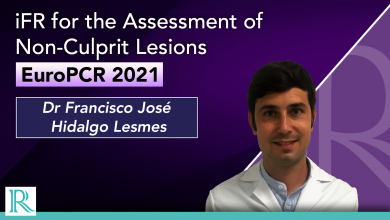Search results
Author(s):
Bogdan A Popescu
,
Carmen C Beladan
,
Carmen Ginghina
Added:
3 years ago
Chronic heart failure (CHF) is a major cause of morbidity and mortality in the general population with a prevalence of 1–2% in developed countries, where it accounts for 1–2% of total healthcare resources. Therefore, the economic burden of HF may become unmanageable, indicating the need for cost-effective preventative strategies and treatments.1 It has been acknowledged that about 50% of patients…
View more
Author(s):
Maria Teresa La Rovere
,
Roberto Maestri
,
Gian Domenico Pinna
Added:
3 years ago
Arterial baroreceptors play a crucial role in the adjustment of the cardiovascular system to several surrounding conditions. In a simplified paradigm, baroreceptor stimulation results in arterial pressure changes that can modulate both sympathetic and vagal activity and, as a consequence, heart rate and myocardial electrophysiological properties, contractility and vascular resistance. Arterial…
View more
Author(s):
Iana Simova
Added:
3 years ago
Coronary flow velocity reserve (CFVR) represents the ratio between maximal (stimulated) coronary blood flow, induced by using a coronary vasodilator, and baseline (resting) blood flow (see Figure 1). As a ratio it is a dimensionless variable. It could be measured with different tools – some of them, such as intracoronary Doppler flow wire and coronary sinus thermodilution, are invasive methods…
View more
Author(s):
Mario Petretta
,
Pierluigi Costanzo
,
Alberto Cuocolo
Added:
3 years ago
Myocardial blood flow (MBF) must respond to changes in metabolic conditions and oxygen requests to meet the needs of myocytes, and autoregulation plays a mayor role in the control of coronary circulation.1–3 It has been demonstrated that, as a coronary artery is progressively narrowed, resting flow does not change at first, but maximal flow (achieved by injecting a vasodilator) decreases…
View more
Author(s):
Serban Balanescu
Added:
3 years ago
Coronary artery disease (CAD) due to atherosclerosis is a major cause of morbidity and mortality. Early prevention of atherothrombotic disease with a healthy lifestyle (diet, exercise, optimal body weight and no smoking) is considered the best method of “treating” CAD, although increasing age remains associated with significant cardiovascular events.
When coronary atherothrombotic disease…
View more
Author(s):
Francisco Hidalgo
Added:
2 years ago
In this interview, Dr Francisco José Hidalgo Lesmes (University Hospital Reina Sofia, Cordoba, ES) outlines the findings of a multicenter observational registry evaluating the use of instantaneous wave-free ratio for the assessment of non-culprit lesions in patients with acute coronary syndrome.
Questions:
What was the rationale for this study?
Can you describe the design, patient population and…
View more
Author(s):
Todd D Miller
,
J Wells Askew
Added:
3 years ago
Case Study
A 47-year-old male truck driver with no previous history of heart disease presents for his annual Department of Transportation physical. He has noticed mild dyspnoea when climbing stairs but not with other activities of daily living. He denies chest discomfort, palpitations, orthopnoea, paroxysmal nocturnal dyspnoea or ankle oedema. His risk factors for coronary artery disease (CAD)…
View more
Realtime Three-dimensional Echocardiography - A New Diagnostic Tool for Mitral Valve Assessment
Author(s):
Jose Luis Zamorano
,
Leopoldo Pérez
Added:
3 years ago
Article
Author(s):
Philippe Garot
,
Liesbeth Rosseel
,
Roberto Galea
,
et al
Start date:
Apr 10, 2024













